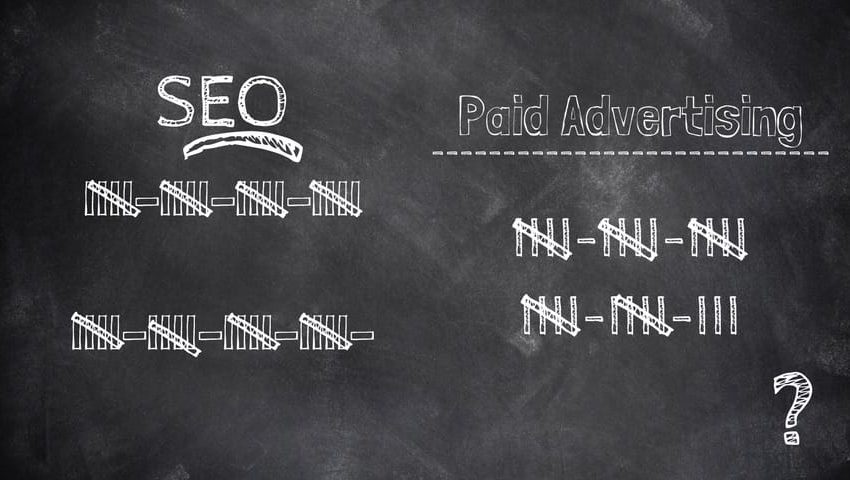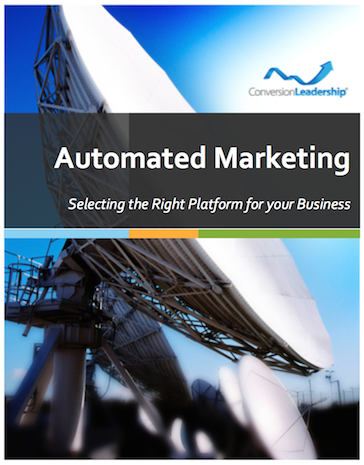Strategic Marketing: SEO vs Paid Advertising

SEO vs paid advertising is an evaluation many organisations face when formulating marketing campaign strategies. Paid advertising can provide immediate and consistent traffic to your site, while SEO is a cost effective method that also improves the quality of your site’s content.
Conversion Leadership client, Dental Care Professionals, chose to ditch paid advertising and replace it with a search discovery strategy. Making their dental clinics more findable with search engines (Google and Bing).
At that time, asking Siri on your iPhone to find answers to your questions was changing how people searched.
So Google began making rapid changes in their algorithms and focusing more on "natural language". That meant that old school SEO that focused on "keywords" was being phased out in favour of "concepts".
Dental Care Professionals also wanted a more active presence on Facebook, without having to dedicate time or resources to it.
Combining these two factors into a single Semantic Traffic Technologies strategy increased traffic to their site bringing an increase in conversions and gives them a regular commentary on Facebook.
The History of SEO and Paid Advertising
First there was the world-wide-web, created by Tim Berners-Lee. This “hypermedia information retrieval initiative” as it was first described, was set to change our lives forever. The challenge - navigating this growing network of websites and so Search Engine Optimisation (SEO) emerged to assist us.
“In the wake of unethical optimisation tactics, Google took charge on developing a more level playing field for brands and content producers to earn rankings”– Search Engine Land
Almost as soon as the concept of SEO emerged, paid advertising was rolled out by Google to accommodate anyone who wanted a short cut to more traffic.
Transition from Paid Advertising to SEO using Semantic Traffic Technologies
Dental Care Professionals (DCP) are a South Australian based dental group with two clinics, one in the CBD of Adelaide and the other in the suburb of Brighton. They initially used paid advertising to drive traffic to their site.
Concerned by the escalating costs to advertise on Google due to more local competitors opting for paid advertising, Conversion Leadership proposed a Semantic Traffic Technologies strategy to reduce DCP’s paid advertising spend and enhance the conversion of warm leads.
[amazon_link asins='B00OM1I36G,B01DV6UJI2,B00NH0XZR0,B079HYR8CL,B06VV92SF1' template='ProductCarousel' store='conversionleadership-20' marketplace='US' link_id='252210ce-76f3-11e8-884e-9b73f863651f']
Your Competitors Make Paid Advertising Expensive
When DCP began advertising on search they were one of the first dental practices in Adelaide to use Google Adwords paid advertising. This allowed them to dominate at very low cost per click (CPC).
Before long their competitors followed suit. This meant that their advertising budget had to climb to maintain the number of clicks they were accustomed to.
From their starting point with CPC to when they finally stopped in May 2016, DCP’s Cost-Per-Click had more than tripled. Together with a declining Click Through Rate (CTR), the writing was on the wall when it came to SEO vs Paid Advertising as far as DCP were concerned.
The Semantic Traffic Technologies™ strategy that Won with SEO
Finding a unique SEO strategy for a dentist required an understanding of target audiences and how they search for information. When Conversion Leadership investigated, they discovered that prospective clients for a dentist wanted answers to their frequently asked questions. Questions, that they are searching for on their mobile and when looking for recommendations on Facebook.
Conversion Leadership leveraged this understanding of DCP's target audience and repositioned their blog to providing answers to questions. Consolidating all blog posts into the dental FAQ page on the DCP site and syndicating the blog posts directly to Facebook.
This strategy has had several benefits:
- more pages of the website were identified as useful and meaningful by search engines, leading to more genuinely interested visitors to the website
- when the paid advertising stopped traffic simply disappeared, now DCP have a stable, reliable, on-going source of traffic whether they stop or not
- paid advertising traffic volumes have been surpassed, the website gets more than double the traffic it got when paid advertising was at its peak
- blog posts can be recycled due to the 'evergreen' nature of the content, which gives DCP the option of reducing costs even further
- syndication into Facebook has extended brand reach, by providing Facebook posts that people actually share
Local businesses often feel that their only option for getting the results they want online are through paid advertising channels. That SEO is a money pit with no ROI.
Semantic Traffic Technologies is an approach that proves that there are better ways. Ways that can be highly leveraged, that achieve outstanding results at a reduced cost and deliver a long-term benefit.
Discover how Semantic Traffic Technologies can revolutionise your results online. Request an Audit now.

